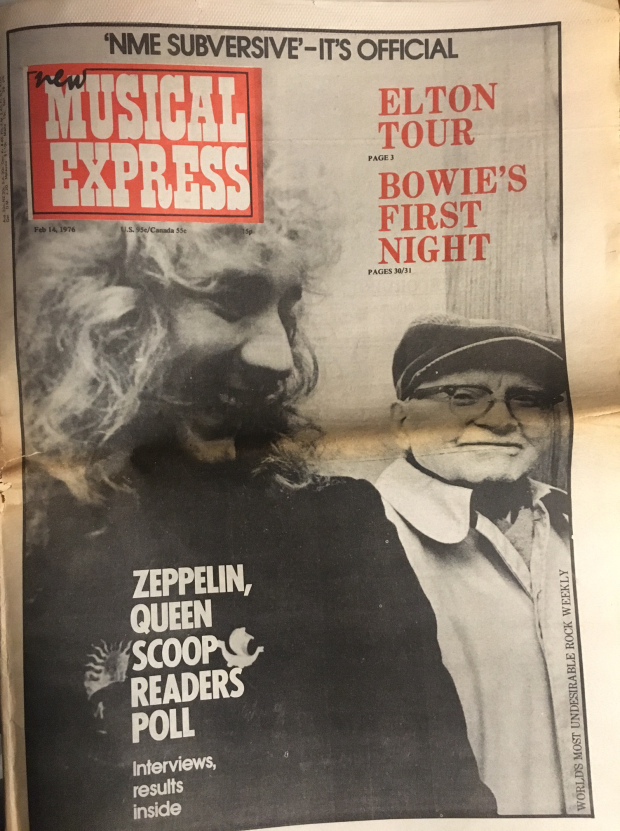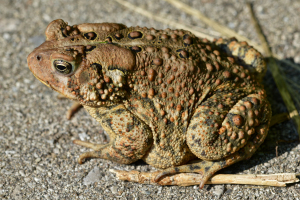
Photo courtesy Wikimedia Commons
Amphibians are bellwethers for us–they let us know what conditions are like in our wetlands. Worldwide, they don’t seem to be faring well. According to Amphibiaweb, in the last 20 years or so, 168 amphibian species have gone extinct–you know, disappeared forever. Almost 1/3 of amphibians are threatened with disappearing the world over. Fatal fungi and habitat destruction seem to be the gravest threats.
With the possible exception of the Egyptians who encountered the Hebrew prophet, Moses, most people like amphibians. 
Depending upon where you live you might have frogs and/or toads, salamanders, or even caecilians as neighbors.
The one thing that ties all amphibians together (OK, perhaps there is more than one thing) is their double life: exisiting on land and water.
Some of them, like caecilians, which includes sirens, spend their entire lives in water. Others, like toads and some salamanders, use aquatic habitat primarily for breeding. Frogs, probably the most recognized amphibian, can be found on land and in the water throughout their adult life-span.
I’m going to focus on toads for this post because…they are found in my neighborhood–my backyard even.
Michigan has two species of toad: the Eastern American toad (‘Merica!), Bufo americanus, and the Fowler’s toad, Bufo woodhousiifowleri. The latter is found along the western third of the lower peninsula, whereas the Eastern American is distributed everywhere, including the U.P. (Upper Peninsula). It’s also found in eastern Canada, and of course, the eastern U.S.
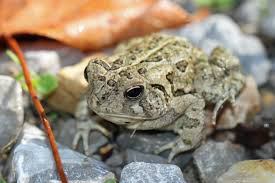
Fowler’s toad (courtesy of Wikimedia Commons)
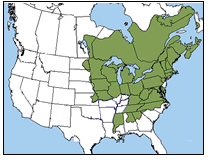
Eastern American toad distribution
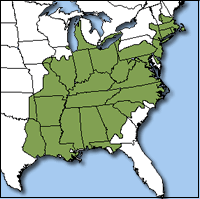
Fowler’s toad distribution
Toads, if you didn’t know, have dry skin and can be gray, brown, reddish-brown, tan, or even olive. Their backs have dark spots, and at times dark spotting is on the throat and belly, but usually that area is whitish or yellowish. Adults are generally anywhere from two to four inches in length–though I saw a giant toad in Canada once (perhaps my tiny boy eyes made the beast appear larger?).
Probably the toad’s signature identifier is the appearance of warts along its back and head. Their short legs, though the hind ones are longer than the front, give them a squat look. Combine squat and warty and you get Sqwarty. That sums up a toad–Sqwarty. Ranging in length from two to over four inches, toads are smaller than many of their frog cousins. That makes them easy to step on, unfortunately.
What’s for Dinner?
Toads won’t eat your crops. They are insectivores and expand their palate to include spiders and earthworms. Supposedly, they can consume 26 insects a day for a total of 3,200 from May to August. Not quite as prolific insect devourers as bats, they still provide ecosystem services pro bono.
Where to Look
If you look in open woodlands and the edges as well, you might find a toad–or multiple ones. If you look in meadows, marshes, lake shores, and even your backyard, you might find a toad.
During hot, dry periods and during winter they are buried in moist soil or plant debris. How did they get there? Toads can dig holes with their hind feet.
Toad Love?
The season of love for toads is in April or May (it began in my neighborhood on April 9th of this year) when they begin moving to wetlands.
That irresistible sound that boy toads make is a high, sharp trill that can last up to 30 seconds, which comes from an inflated throat sac.
Toad sex is called, sexily enough, amplexus. The male clasps the female from behind her front legs and then fertilizes anywhere from 2,000 to 20,000 eggs which emerge from her body in long, gelatinous strings that attach to submerged rocks, plants, twigs, hot tubs, whatever.
Depending on the water temperature, tadpoles will hatch 3-14 days later. The pre-toads eat algae, plant material, and the dead, but not mosquito larvae unfortunately. In about 6-10 weeks they transform into toadlets and take about 2-3 years to reach their massive 2-4+ inch adult size.
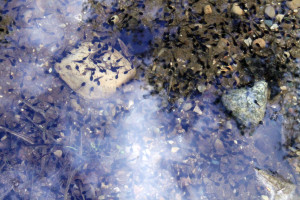
Pre-toads…
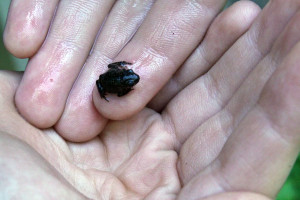
…to toadlet.
Please Don’t Eat the Toads
A toad’s coloring and texture help camouflage it in it’s surroundings. Failing that, they can secrete an icky substance from their back warts which can be toxic to small mammals if ingested. Plan C is to inflate with air to prevent something swallowing the toad. And if you still insist on picking them up, they’ll probably urinate in your hand.
Did You Know…?
- Toads are found on all continents except Antarctica
- A group of toads (what’s the minimum number? I. Don’t. Know.) is called a knot
- They have no teeth
- According to my sources they are nocturnal, but I’ve found plenty of toads in the daytime. The mating call does tend to start around dusk, however.
- The lucky ones can live for 20-40 years
- While you can find them near water when it isn’t mating season, they’ll generally be found in drier areas.
Toads have made it into 20th Century pop culture:
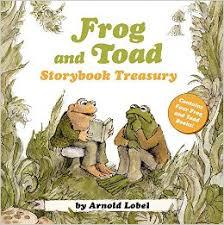
A series of stories for early readers–something from my childhood.

I didn’t read this as a child, but I did read it to my son.

Everything gets appropriated by Disney!
- Have you ever held a toad in your hand? Aside from the small puddle of urine, you’ll also notice the cool, clammy, thin skin. It’s like holding a small pouch of bones.
Do what you can to encourage toads to visit your backyard. Your children will thank you.
Advertisements Share this:
- More



